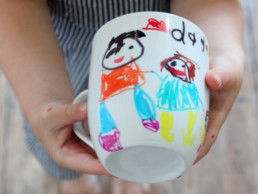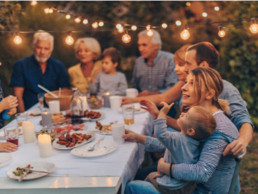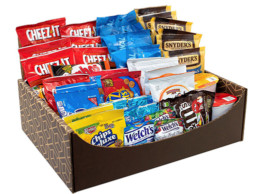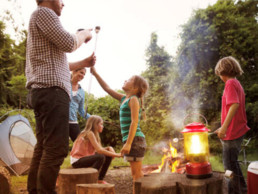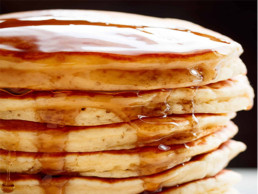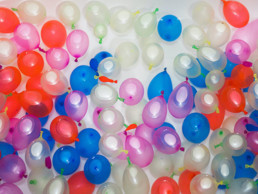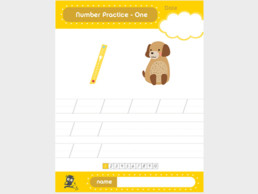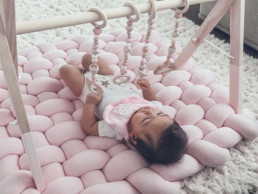Father's Day Mug
One of the best gifts I have ever recieved was a piggy bank decorated with sharpie markers by my sons with all my favorite things on it. This is similar, but for the coffee or tea drinking father. It is inexpensive, and very easy to make! If your child is too young to “draw”, they can always scribble. You can use stickers beforehand to spell the word “dad” or even dad’s name. Here is an example below:

Best Ages for This Activity
One to five
How to Make It
You will need:
- A white ceramic mug that has been fired and glazed (it’s just your regular cheap mugs – you can buy this at any dollar store or supermarket, at a thrift store for less than a dollar, or online here
- Paint Sharpie markers (if you use the regular sharpie markers, they will rub off and fade over time. The paint sharpie is oil based) These come in metallic, full colour set, and even white if you opt for a black mug.
- Rubbing alcohol if you have (you could skip that step if you wash the mug really well)
- Letter stickers (optional – only if you are making the scribble mug)
Let’s Get Started!
- Invite your child to make a mug for dad, as a gift for Father’s Day
- Wash and dry the mug (your child can do this)
- Clean the outside with rubbing alcohol and let it evaporate (this may take a few minutes. Then it is important that you don’t touch the mug on the outside so you don’t transfer oils from your hands on it. I know this is easier said than done with young children, so just do your best J
- Now your child is ready to draw on the mug! If you want to wipe off little fingerprints after it is finished and clean it up a little, you can use rubbing alcohol.
- Allow the mug to dry for 24 hours (this reduces fading over time, but you can skip it if you are in a rush)
- Put the mug in the oven while it is cold (perfect for your child to do!) then turn up the temperature to 450 degrees F and bake for 30 minutes. Then turn off the heat and keep it inside so it cools off gradually and avoids breakage of an inexpensive mug.
- If you want your mug to be dishwasher-safe, seal it with mod podge. Otherwise you can wash it by hand and skip the sealer.
Learning Opportunities
This is a great activity to help your child think of others, namely: their father. This helps your child develop empathy. It also develops your child’s fine motor skills and drawing skills.
Other Activities Your Child Might Like
For more ideas on what you can do for Father’s Day, click here!
Books Your Child Might Like
Father's Day Family Dinner
Father’s Day is a great opportunity to spoil dad with his favourite meal, prepared by his very own children (with help). You can even invite both grandparents for a big family dinner!
This is a great activity to help your child think about others, in this case their dad: about what they really love to eat, to drink, and to have for dessert! It teaches them empathy and brings your family closer together. You may choose to invite grandparents, since they are also celebrating Father’s day, but remember to keep the focus on dad. Also make sure he is not working hard on his special day. As much as possible, have your child can set the table, help serve food and drinks, and clean up after dinner.
Best Ages for This Activity
Zero to five. Just know that the younger they are, the more you will have to do on their behalf but still, it is a nice evening for dad.
How to Make It
You will need:
- Ingredients to prepare dad’s favourite dinner (and dessert)
- Drinks
Let’s get started!
- A few days before Father’s Day, invite your child to make a special dinner for dad (for Father’s Day). This will give you time to plan and prepare
- Involve your child in planning it in advance:
- What is dad’s favourite meal?
- What is his favourite dessert?
- How do we make it?
- What ingredients will we need?
- What else would you like to do for dad?
- Invite the grandparents (if that is what you choose)
- Go shopping for all the ingredients
- The day of, cook with your child, set up the table together and get everything ready
- Make sure dad feels special on that day, and takes the time to relax while his family prepares the special meal for him.
Learning Opportunities
Cooking is a great activity for your child to learn life skills. It teaches your child S.T.E.M. as they mix, measure, pour, cook, boil and watch the many scientific reactions happening as they cook. It is also a great opportunity to spend quality time as a family. Making sure dad has a good time teaches your child empathy. Enjoy!
Other Activities Your Child Might Like
For more ideas on what you can do for Father’s Day, click here!
Books Your Child Might Like
Toys I Recommend for Infants (new)
Before they turn one, babies learn through their senses. They can make eye contact, smile, grasp objects and bring them to their mouth to learn even more about them. What they need most of all is adult interaction: talking, singing, reading to baby, holding them and caressing them, rocking them, are all essential. You can read more about how your baby learns in this article.
Newborns are learning so much already, getting to know those closest to them, and all the sounds, sights and smells around them. As they develop, choose simple toys that engage baby, that encourage sensory exploration, motor skills, and cause and effect.
Here are some toys grouped by learning outcomes:
5 Ways for Toddlers to Celebrate Father’s Day During Quarantine
Although your children are still young, you might have already established some Father’s Day family traditions, like brunch at dad’s favourite place, or going to a sports game or even a special event organized at school for dad. This year due to COVID-19, these traditions might have to be adjusted a little but there are plenty of ways we can still make dad feel special on his day. Here are some ideas to celebrate dad and make him feel loved and appreciated, from our very own homes.
1. Bring Dad Breakfast in Bed
Nothing shows appreciation more than making sure dad sleeps in on Father’s Day. Then treat him to a nice croissant, hot coffee and newspaper in bed when he wakes. Make sure your toddler helps you prepare the tray, make the coffee, warm the croissants and carry everything to dad’s bedside (except the hot coffee), so it really comes from your child. If breakfast in bed isn’t dad’s favourite, you can make brunch instead. Click here for instructions on how you can do this!
2. Treat Dad to A "Snack and Nap”
Help your toddler prepare a package with dad’s favourite snacks, drinks and magazines so he can snack before taking a nice long nap and catching up on sleep. For instructions on how to make the perfect snack and nap box, click here.
3. Make Dad His Favourite Meal for Dinner
Let dad know how well you know him by cooking the food he loves best to celebrate him this Father’s Day. If you are able and comfortable, invite the granddads too! Click here for step by step instructions on how to make this happen.
4. Take Dad Camping in Your Own Backyard
Don’t let the fact that campsites are closed deter you from going camping. Set up a whole camping trip right in your backyard, complete with barbecue, smores and stargazing all night. Click here to find out how to set it up.
5. Watch Dad’s Favourite Movie
Teach your toddler to learn more about their dad by asking dad to tell them all about his favourite movie (of course, dad is smart enough to know that he won’t be sharing his love for horror movies with baby just yet, and will choose one that he knows baby will love too – maybe even cartoons from when he was a young boy). You can prepare popcorn and drinks to bring for the whole family and cuddle up together for the movie. If it’s nice outside, you can even have an outdoor movie night. Dad will be happy to share his favourite film – and to get to choose for once! Your toddler can ask dad about why he loves that movie and about when he was a little boy.
This year, dad might be needing a celebration more than ever, so don’t let quarantine get in the way of making it a really special day for someone who makes every day special for his little ones. Here are more ideas you can do from home. Have a happy Father’s Day this coming Sunday!
Father's Day Snack and Nap
I love putting these snack boxes together! I do them for my children and friends on their birthdays, after a hospital stay, for new parents and of course for my spouse. It is a great activity to help your child think about their dad: about what they really love to eat, to drink, to read and to do. It teaches them empathy and brings your family closer together. It is simple to do as well and never fails to please – all it takes is a box and trip to the supermarket. In this case, I made it special by packaging it as a “snack and nap” – which means dad will get their favourite food and drinks, maybe a few magazines in there and a coupon for a Father’s Day nap. Because we all need a little rest from time to time. This has all the ingredients necessary for dad to take with him, lay on a hammock at home and just chill – does it get any better than this?
Best Ages for This Activity
Eighteen months to five years
How to Make It
You Will Need:
- Dad’s favourite snacks
- Dad’s favourite drinks (one or two drinks is good)
- A new magazine that dad likes to read
- A ticket valid for a nap. You can cut this one:
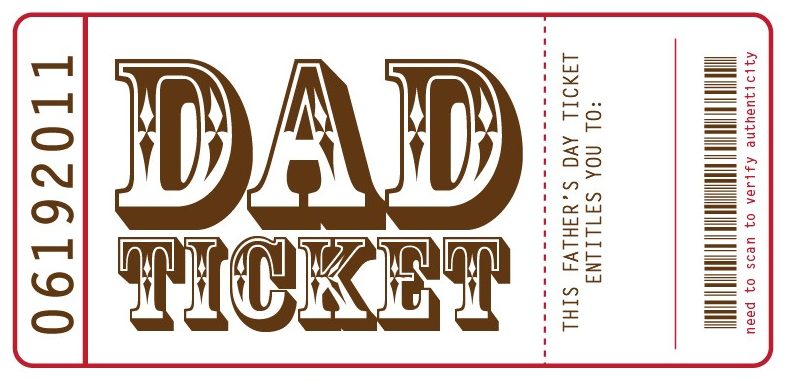
Let’s Get Started!
- Invite your child to prepare a surprise for Father’s Day
- Find a nice box (it can be a gift box or any box you find around the house – you can return it to its rightful place after Father’s Day. I use a wooden box I have at home)
- Together, talk about what special things dad likes to eat, and what his favourite drinks are. This is an important part of the activity, as your child will have to really think about dad, about what he likes (not what your child would like). It teaches your child empathy.
- Make a list together of those things, and then either go by yourself to pick them up or invite your child to come shopping with you.
- Once you have the snacks, the drinks and the magazines (or a nice new book if he’d prefer), invite your child to arrange them nicely inside the box. You can put the drinks in the box as well and also duplicates of them in the fridge so you can swap them for cold ones at the last minute.
- Make a coupon valid for one Father’s Day nap and add it to the box. You can print the one I included above if you wish.
- With your child, find a good hiding spot to hide your special gift somewhere until Father’s Day. Your child will be so excited to keep it a surprise until then! If they are anything like me, they will hardly be able to contain themselves.
- Now you just wait till Father’s Day, when your child can give dad his “snack and nap” special package and make sure dad really enjoys his snacks while resting in the backyard or napping comfortably. This is a good way to teach your child to take care of their parents and think of their needs.
Learning Opportunities
This is a great activity to help your child think of others. This helps your child develop empathy. It also teaches you child to observe others and see the things they like, which are not necessarily the things a child would choose for them.
Other Activities Your Child Might Like
For more ideas on what you can do for Father’s Day, click here!
Books Your Child Might Like
Father's Day Backyard Camping
If dad loves camping, why not give him a weekend of family camping right in the backyard? Plus since it is Father’s Day, dad gets to do as little as possible while the whole family sets up the tent, prepares the food and gets the smores ready for dad to enjoy!
Don’t have a backyard? Don’t worry. You can set up a tent in the living room, and if you dare, even a mini propane barbecue as well!
Best Ages for This Activity
Zero to five (or older)
How to Make It
You will need:
- A tent that can fit the whole family
- One sleeping bag for each person in the family
- A portable propane barbecue to cook your food in OR a portable charcoal barbecue OR you can just use your barbecue if you have one
- A camping fire pit
- Food that you can prepare outside
- Marshmallows, milk chocolate and graham crackers (for s’mores)
- Simple activities to do outside (a ball, a table game, books or whatever you like to do as a family)
- Drinks
- Flashlights (these are a must for your child)
Let’s Get Started!
- Invite your child to have a backyard camping adventure for Father’s Day
- Together, set up the tent, put drinks in a cooler with ice, set up the food and the sleeping bags, snacks and fruit, etc. Make sure your child does as much of the work as possible, so they learn how to set up a tent, how to organize the supplies, how to get in and out of the tent without stepping on the sleeping bags, and all the other skills they will one day use on their own.
- Enjoy yourselves for one day and one night, or the whole weekend if you prefer! The idea is to try to “survive” outside without having to go in the house (except to use the bathroom): cook outside, relax outside, play games, spend time together, light a fire, etc. Of course, you can adjust the wilderness aspect of camping to your family’s preferences. You might not want to cook in a pit or leave your drinks on ice, and that’s ok. For your child, just the fact that you will be sleeping in a tent is exciting enough!
- If dad does not like camping, you might want to do this activity on a different weekend since it is all about dad this weekend!
Learning Opportunities
Camping is a great activity for your child to learn life skills. It offers plenty of opportunities for creativity, imagination, fun, exercise, reasoning and problem-solving. It is also a great opportunity to spend quality time as a family. Making sure dad has a good time teaches your child empathy. Enjoy!
Other Activities Your Child Might Like
For more ideas on what you can do for Father’s Day, click here!
Books Your Child Might Like
How to Make Fluffy Pancakes
This is a fun and educational activity that you can do at home with your child. Our in-house chefs make pancakes for our students at our CEFA Early Learning schools, and they love them! But I have to say, there’s nothing they love more than making the pancakes themselves. Cooking is an immensely educational activity, and I really encourage you to start cooking with your child, or involving them in the cooking process more, even at a young age.
Best Ages for This Activity
One to five
How to Make It
Ingredients (for 12 pancakes)
- 2 cups all purpose flour
- ¼ cup white sugar (you can substitute with sweetener)
- 4 teaspoons baking powder
- ¼ teaspoon baking soda
- ½ teaspoon salt
- 1¾ cups milk (440 ml)
- ¼ cup butter (60g)
- 2 teaspoons pure vanilla extract
- 1 large egg
You Will Also Need
- A pancake turner or flipper
- 2 large bowls or containers (for mixing)
- A stove your child can access and a coated, non-stick (enameled) skillet. I use enameled because they are better for your health than Teflon or non-stick, and I cook every day, but you can use whatever you normally cook with.
- If your child cannot safely access your stove, you can use what we use at our schools: an electric griddle. We make lots of different recipes on them, and they can sit on a child-sized table, where your child can cook a little more safely.
Let’s Get Started!
- Invite your child to make plain homemade pancakes
- Start by cleaning the work surface, then measuring all the ingredients and getting them ready to cook with. Make sure that your child does as much of the measuring, mixing and pouring as possible, as well as the cleaning and putting away. These are all incredible learning experiences and the more your child does, the more they can practice math, science, fine motor skills, life skills, and other learning skills.
- Melt the butter (it can be done in the microwave or in a small pan) and let it cool down a little while you:
- Combine the flour, sugar, baking powder, baking soda and salt in a large bowl.
- In a separate bowl, whisk together the milk, melted butter, vanilla and egg until combined. You can use a whisk or an electric mixer for this.
- Fold the wet mixture into the dry mixture, mixing slowly. You might get a few bumps but that’s ok. You can also use the electric mixer if you prefer.
- You now have the batter. If you prefer your batter less thick, you can add a little milk and mix, to make it thinner.
- Turn on the griddle or stove top to low-medium heat.
- Slightly grease the pan or griddle with a little butter (I use butter sticks that children can hold and “paint” the pan with (not too much butter – they need to move fast). If your child is too young for this part, you can grease the surface yourself.
- Show your child how to pour pancake batter on the pan and watch it spread into a larger circle. You can use a measuring cup with batter in in (you will pour about ¼ cup per pancake). Be sure to supervise at all times as the pan is hot and can burn.
- If the batter is thick and does not spread, you can help your child spread it gently using the back of a spoon.
- Teach your child that the pancakes are ready to be flipped when the underside is golden and little bubbles start to form on the surface of the pancake. Teach them how to flip a pancake and remember that as messy as things can get, this is helping your child become independent and learn all sorts of skills needed to succeed at school.
- Once they are ready, your child can proudly serve the pancakes to the whole family! What a wonderful way to contribute.
- Serve with maple syrup or whipped cream and fruit on the side.
Learning Opportunities
I love helping children learn to cook because it is a great life skill and an incredible way to contribute, to give of yourself to others, to do something for someone other than yourself, which children both love doing and need to do. By cooking with you, children feel great pride, and benefit from a healthy self-esteem. They also learn to be independent and responsible. Children will learn S.T.E.M. while measuring, combining, mixing, counting, This recipe also has a great amount of hand-eye coordination skills, and of fine motor skills, a precursor to writing. following directions also teaches reading and S.T.E.M..
Doing this activity together is also a great opportunity for you and your child to connect. You can share life stories, ask them about them, their plans, and get closer. For example, you can ask:
- Who are you preparing pancakes for?
- What is your favorite topping for the pancakes? What is theirs?
- What other types of pancakes do you want to try next time? For example, banana, chocolate chips or blueberry pancakes?
- Do you remember a time when we had pancakes as a family? What did you like about it? (you can also share your favorite pancake family time from when you were a child)
- Who else likes pancakes? (Grandma? Uncle? Friends from school?)
- Etc.
Distributing the pancakes equally amongst all family members is also 1 to 1 correspondence – a math concept. It also works on the math concepts of estimating quantities, measuring, division, and many others.
Making the pancakes, cleaning the workspace and the dishes are essential life skills. Cooking in itself is also an important life skill and sharing what they cooked with the rest of the family teaches your child the habit of contribution and thinking of others.
Extended Learning Opportunities
- Invite your child to invent pancake recipes for next time by asking them to suggest different things they can add to the batter. They can be banana-chocolate chip pancakes, or blueberry pancakes, or just chocolate chip ones – try a few types!
CEFA tip: Remember to let your child do as much of the process as they are capable of.
Books Your Child Might Like
For 0-5
For 1-5
For 3+
Toys Your Child Might Like
For 0-2
For 2-5
For 4+
Water Balloon Bath
This simple activity will delight your child! All you need is water balloons, and a bath. It offers a fun sensory experience, and little bit of S.T.E.M. as your child tries to figure out why the balloons float on the water (because they still have a little bit of air, which makes them lighter than the bath water).
At our CEFA Early Learning schools, we can only do this in a sensory table or in the summer in a small pool, but if you have a bath at home, it will be an even better experience for your little one. Remember to supervise every minute of play and give it a try.
Best Ages for This Activity
Zero to five years
How to Make It
You Will Need
- 30 to 50 water balloons
- A bathtub or shallow pool
Let’s Get Started!
- Fill the water balloons with water, tie them and put them in the bathtub
- Fill the bathtub with water and call your child to reveal the big surprise
- Invite your child to get in the bath and play!
They will delight in playing with the balloons, squeezing them, trying to sink them and watching them float back to the top (wonder with your child: why do they float to the top?). They will spend a long time molding them into different shapes and seeing how they go back to their original shape, popping one or two and feeling the cold water inside them change the temperature of the bath around it, feeling their texture and feeling them brush against their bodies, and so many more fun ideas they will come up with!
- Make sure you stay with your child at all times to prevent drowning or choking.
Learning Opportunities
Sensory play is an important activity in and of itself in the early years. This particular sensory activity also provides an opportunity for children to practice coordination and fine motor skills (which are needed for writing). Your child will learn about S.T.E.M. while figuring out why the balloons float to the top, and new vocabulary, which gives them literacy skills, including math vocabulary. Use descriptive words to describe how the balloons feel (squishy, slippery, soft) and as much math vocabulary as well: heavy/light, float/sink, hot/cold/warm, how many, numbers, counting, colours, etc.
Books Your Child Might Like
Toys Your Child Might Like
Number Writing Practice Sheets – 1 to 10
These worksheets are used at our CEFA Early Learning schools for our 3 year old children (Junior Kindergarten Two), and presented only after our students have had practice with lines and curves practice sheets, immediately after the alphabet practice sheets.
If your child is not attending our schools and you would like to try these at home, make sure you follow the directions indicated on the large letters (green means start, red means stop, and the arrows will point you in the right direction. As well, encourage your child to say the number, and count the animals next to each number so they understand that each number corresponds to a certain quantity.
We teach this to our students one child at a time, as the teacher needs to observe to make sure the child is following the right directions (otherwise they are learning it and practicing it wrong, which will impact their writing skills in the future). Make sure you do the same so your child can learn to write the right way (no pun intended!)
You can download the practice sheets here.
Best Ages for This Activity
Three to Five
How to Make It
What You Will Need
- Paper
- A printer
Let’s Get Started!
- Print the worksheets
- Invite your child to practice writing
- Give them a fine felt marker if they are beginners, because a pencil is harder for them
- Only do a maximum of one worksheet a day
- If your child wants to keep working, invite them instead to write the number on a sheet of paper and draw the number of objects corresponding to each number (for example, draw 3 apples for the number three). Drawing is an excellent fine motor activity to prepare your child to write.
Learning Opportunities
This activity will give your child literacy skills, as well as math language. They will learn writing skills as they trace the number and reading skills as they identify the number, as well as count the number of objects corresponding to that number, which teaches them math.
Extended Learning Opportunities
- Count real objects. For example:
- How many leaves does the head of lettuce have?
- How many grapes are in this bunch?
- How many toys are in your toy trunk?
How many fingers do we have? How many toes?
Learning with Hanging Objects for Infants
This activity is perfect for very young babies. You can start as soon as your child is born if you like, and as the months pass, you will be surprised to see how quickly they learn to play with the hanging objects differently. A newborn will stare at the objects, whereas by two months of age, they will already try to bat at them with their hands and legs (you can vary the position of the play gym so one day their hands reach and another their feet reach). Later, they will try grabbing the objects and holding onto them as they explore them.
Children at our CEFA Early Learning schools are too old for this activity, but it is perfect for newborns and young babies. Try it at home!
Best Ages for This Activity
0 to 6 months
How to Make It
You Will Need
- A baby gym (you can make your own as long as you are very sure that it is safe)
- A comfortable surface for them to lay on (it can be their crib if you wish, or a thick comforter on the floor)
Let’s Get Started!
- Assemble the baby gym and lay your baby underneath it. Make sure you supervise at all times and position the objects in a way that they will not scratch or hurt your baby’s delicate skin.
- Remember that very young babies cannot turn their heads. For this reason and until they are capable of taking their focus away from the toys hanging from the baby gym, you must stay close at all times. Only place the baby gym above them for a few minutes at a time so they don’t feel overstimulated. If your baby starts to cry, remove the baby gym and try again a day later.
- It is best to do this activity when your baby is not tired or hungry. For example, when they just wake up (after feeding)
- Each week vary the objects you hang from the gym with objects you can make yourself. You can then bring back objects you used before after two or three weeks – your baby will love to focus on them again!
Here are some ideas:
- Black and white patterns (here are some free patterns that you can print)
- Photos of your family (parents and siblings) focusing on just the face
- A small toy they can grab and pull, like this one for example:
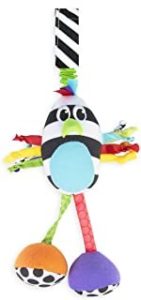
- Bells that make noise when baby bats at them (you can use the ones from this music set, which they can also use as instruments when they are a few months older)
- A maraca that makes noise when baby bats at it with feet or hands (you can use the ones from this music set, which they can use as instruments when they are a few months older)
- Colorful ribbons
- Colorful scarves
- A light ball they can grab, like this one
- Soft rattles, like these
- Three bright shapes like these or these, or ones you can make with cardstock
- One small toy that they can focus on, like this one
Learning Opportunities
At first (when they are very young) your child will focus on the objects or pictures and learn from them. During that time, photos of your face and the faces of the people closest to babies are perfect. Even photos of other babies. As well, black and white images offering high contrast are great learning tools for babies. Later, your baby will learn S.T.E.M. while they try to bat, pull or touch the objects with their hands and feet, and they begin to examine objects (and their reactions) more closely. It is also a nice sensory activity, a precursor to writing.
